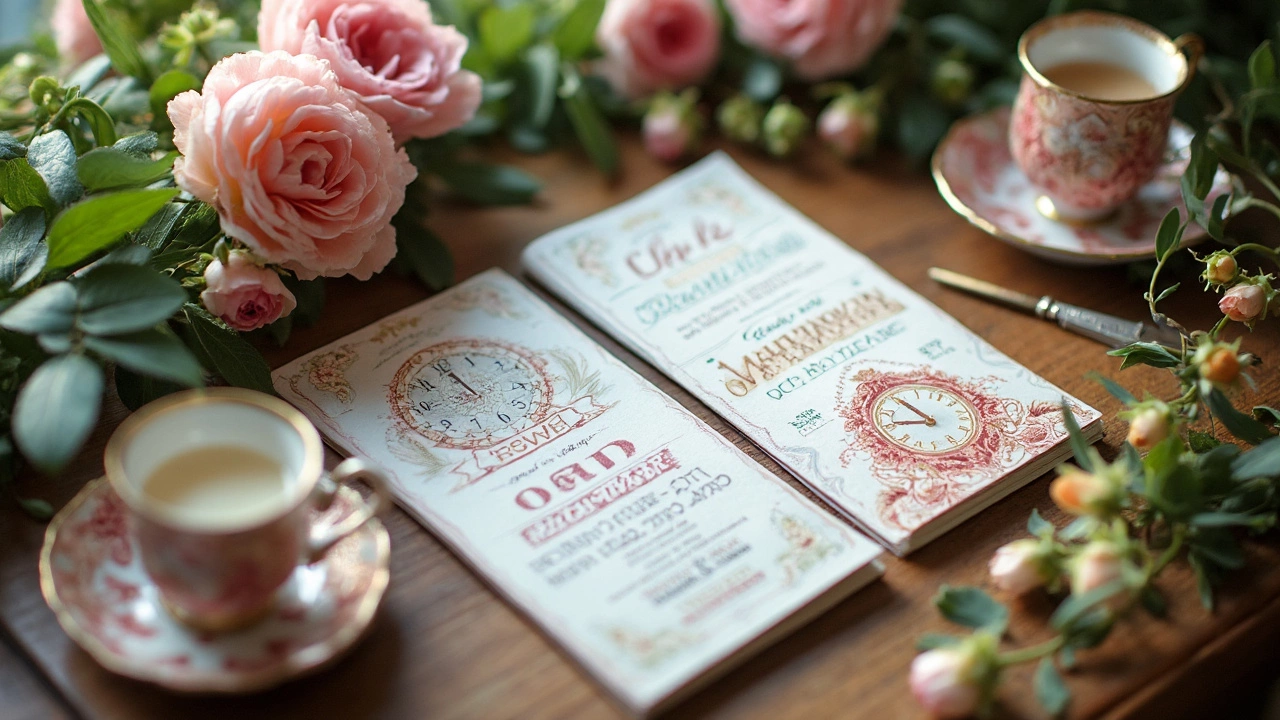So, you’ve circled a wedding date and you’re ready to send those fancy invites. But how do you decide how long your guests get to RSVP? Get too strict, and people feel rushed. Drag it out, and you’ll be chasing down replies weeks after your caterer wants a headcount. The window you pick really matters—and can save you a ton of headaches.
Caterers, rentals, and venues ask for your final numbers weeks before the big day. That’s why you can’t just wait for everyone to get back to you at their own pace. If you cut it too close, you risk surprise guests or empty seats. Most couples aim for a sweet spot: about three to four weeks before the wedding. But it’s more than just picking a date and hoping for the best. A well-set RSVP deadline actually nudges your guests to respond promptly and keeps your whole planning on track.
- Why RSVPs Matter More Than You Think
- The Perfect RSVP Deadline: Finding the Sweet Spot
- Common RSVP Pitfalls (And How to Dodge Them)
- Making RSVP Responses Easy and On Time
Why RSVPs Matter More Than You Think
It’s easy to brush off RSVPs as just a minor detail, but they can actually make or break your whole wedding planning vibe. That little response card or online link is the key to everything from your dinner bill to having enough chairs for your cousins. Seriously, every wedding expense, from floral centerpieces to desserts, is tied to your guest count.
Most venues and caterers want your final numbers at least 2-3 weeks before the wedding. That’s not because they’re impatient. It’s because they need to order, prep, and reserve enough food and space (down to the last bread roll). Even your seating chart and escort cards depend on these numbers. If you don’t get enough wedding invitation responses, you’ll be in a guessing game—risking running out of food or wasting money on no-shows.
Here’s where things get real: about 15-20% of wedding guests don’t respond by the first RSVP deadline. And if you push your date too late, you’ll scramble to finish seating and place-card arrangements the week before your wedding. Not so fun.
| Wedding Detail | Requires Final Headcount? |
|---|---|
| Catering | Yes |
| Reception Seating Chart | Yes |
| Party Favors | Yes |
| Transportation/Shuttles | Yes |
| Guest Accommodations | Usually |
If you want to avoid last-minute texts (“Did Aunt Jan say she’s coming?”) or big bills for guests who didn’t show, don’t leave your guest response timeline as an afterthought. A clear and well-planned RSVP window protects your budget, your stress level, and honestly, your sanity.
The Perfect RSVP Deadline: Finding the Sweet Spot
Nailing the right RSVP deadline can save you from stress when it’s time to hand your guest response count to your vendors. Most experts agree: setting your RSVP date about three to four weeks before your wedding works best. This gives people enough time to check their schedules, but not so much that they forget altogether or leave you hanging.
Wondering why three to four weeks is the golden window? Here’s the deal: caterers, rental companies, and venues usually want headcounts finalized anywhere from 10 to 21 days before your event. If you set your RSVP date a week or so before their deadline, you’ll have a little buffer to chase down any stragglers—because let’s be real, someone always forgets to reply on time.
| Wedding Date | Mail Invites | RSVP Deadline | Final Count to Vendors |
|---|---|---|---|
| June 1 | March 25 | May 4 | May 11 |
| September 15 | July 5 | August 18 | August 25 |
Timing your invitations is just as crucial. The pros recommend mailing out traditional wedding invitations about 8 to 10 weeks before your date. For destination weddings, think 12 or more weeks out. The RSVP deadline should fall about a month before the big day, giving you wiggle room if Aunt Linda needs a gentle nudge.
Here are a few straight-to-the-point tips to get your RSVP timing right:
- Check with your caterer and venue for their exact deadline — don’t assume.
- Add a week buffer to your RSVP deadline so you’re not scrambling last minute.
- If you send digital invites, shorten the RSVP window to two to three weeks. People tend to respond faster to emails or wedding websites.
- Make the RSVP deadline clear and bold—no burying it in small print.
It might feel bossy, but setting a firm RSVP deadline will save you a ton of texting, reminding, and stressing closer to your big day. And trust me, future-you will be so grateful.

Common RSVP Pitfalls (And How to Dodge Them)
Here’s where things often go sideways with RSVP deadlines. One big problem? People just forget. About 20% of invited guests won’t respond without a reminder, according to data from wedding planning sites. Some guests lose the invite, some put it off, and honestly, some just don’t get around to it. That’s why you can’t just send out the invitations and cross your fingers.
Another classic pitfall is making the deadline too close to your wedding or your vendor’s final headcount deadline. If you give people only a week or two, a bunch will miss it, especially if someone’s traveling or not checking their mail often. Giving guests four weeks to respond—and sending reminders—is the sweet spot.
You can also run into trouble if the wedding invitation itself isn’t clear on how and by when to respond. An unclear RSVP card leads to confusion, and, yes, more people ghosting you.
- Long, confusing deadlines: Don’t make guests guess. Put a clear deadline right on the RSVP.
- No reminders: Use a digital tracker or spreadsheet and plan to text or email anyone who hasn’t responded a week before the deadline.
- Limited response options: Some folks are more likely to reply if there’s an online option. Think about using a wedding website or a QR code on your invite.
- Unclear plus-ones: Specify exactly who is invited and if someone can bring a date. This avoids awkward surprises later.
Here’s a quick look at how people actually RSVP these days:
| Method | Typical Response Rate |
|---|---|
| Mail-in cards | 70%-80% |
| Online RSVP | 85%-95% |
| Phone/Text | Up to 95% |
If you can, offer more than one way to send a response. You’ll have fewer stragglers and spend less time playing detective.
Making RSVP Responses Easy and On Time
If you want those RSVP cards back without having to nag your cousin five times, make it super easy for everyone to reply. The fewer steps, the better. You’d be surprised at how much folks love convenience, and a little thought here saves a heap of stress later.
First, offer more than one way for guests to reply. Including a traditional mail-back card is great, but adding an online RSVP option? Game changer. Most wedding websites let you track responses in real time, so you don’t have to second-guess your headcount. According to a 2023 survey by The Knot, over 70% of couples who offered both paper and online options saw faster response rates.
- Clear instructions: Spell out exactly how and when you want the RSVP. If guests need to mail a card, include a pre-addressed, stamped envelope. If it’s online, share a simple web address and a QR code for quick access.
- Polite nudge: Nobody likes to be chased, but gentle reminders work. About a week before your deadline, send a friendly text or email to stragglers. Don’t make it awkward—just keep it casual and direct.
- Considerate options: Life gets busy, so give guests at least three to four weeks to respond. That balance gives people time to check schedules and book travel without putting off the reply forever.
Check out this table for a quick look at common wedding invitations RSVP methods and their average response rates:
| RSVP Method | Average Response Rate |
|---|---|
| Mail-In Card Only | 65% |
| Online RSVP Only | 74% |
| Both Mail & Online | 85% |
One final tip: Don’t forget to put the RSVP deadline right on the invitation, not just on the card or website. Most people scan the invite, so put it front and center. That clear heads-up avoids confusion and means fewer people texting you for details later. Simple, clear, and convenient wins the day when it comes to getting those responses on time.
